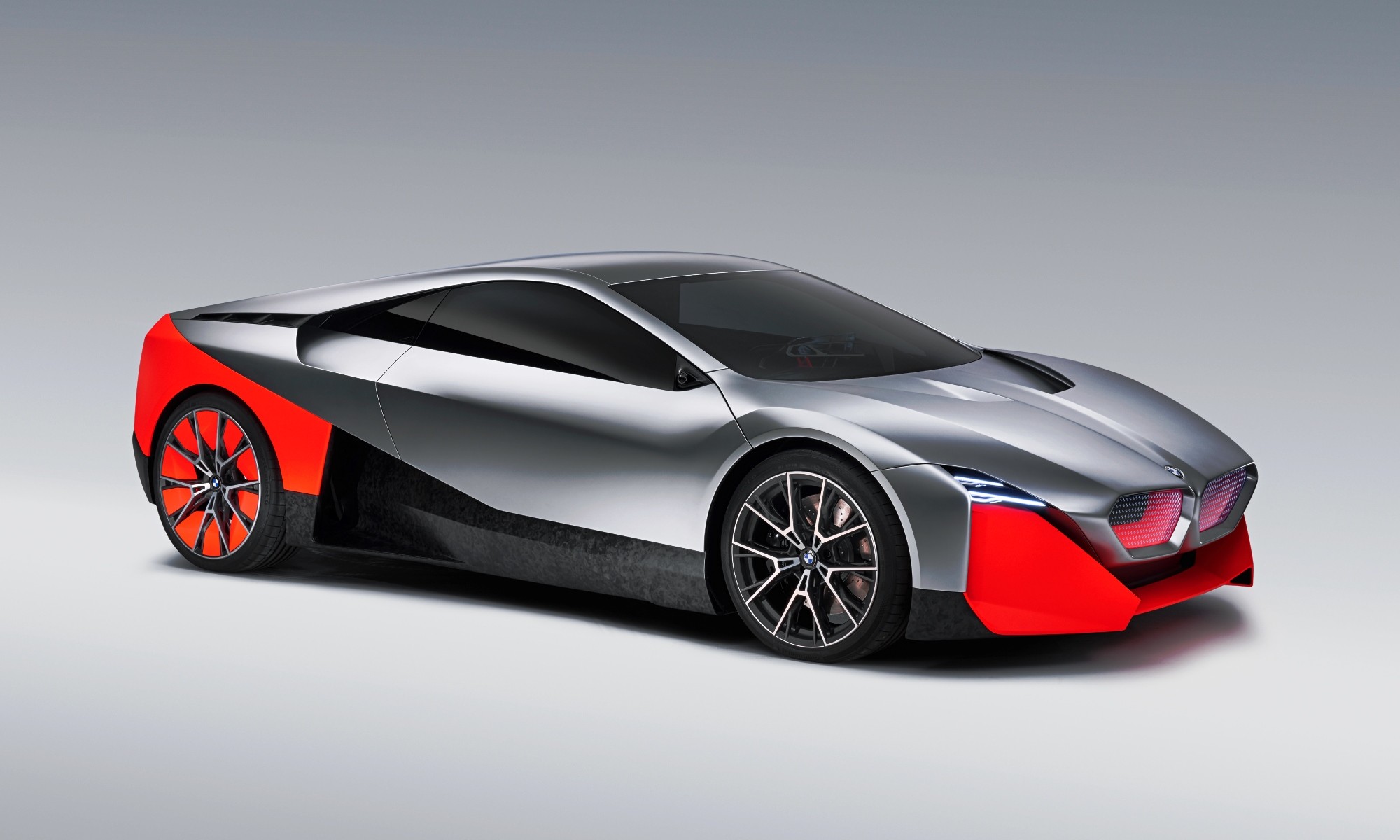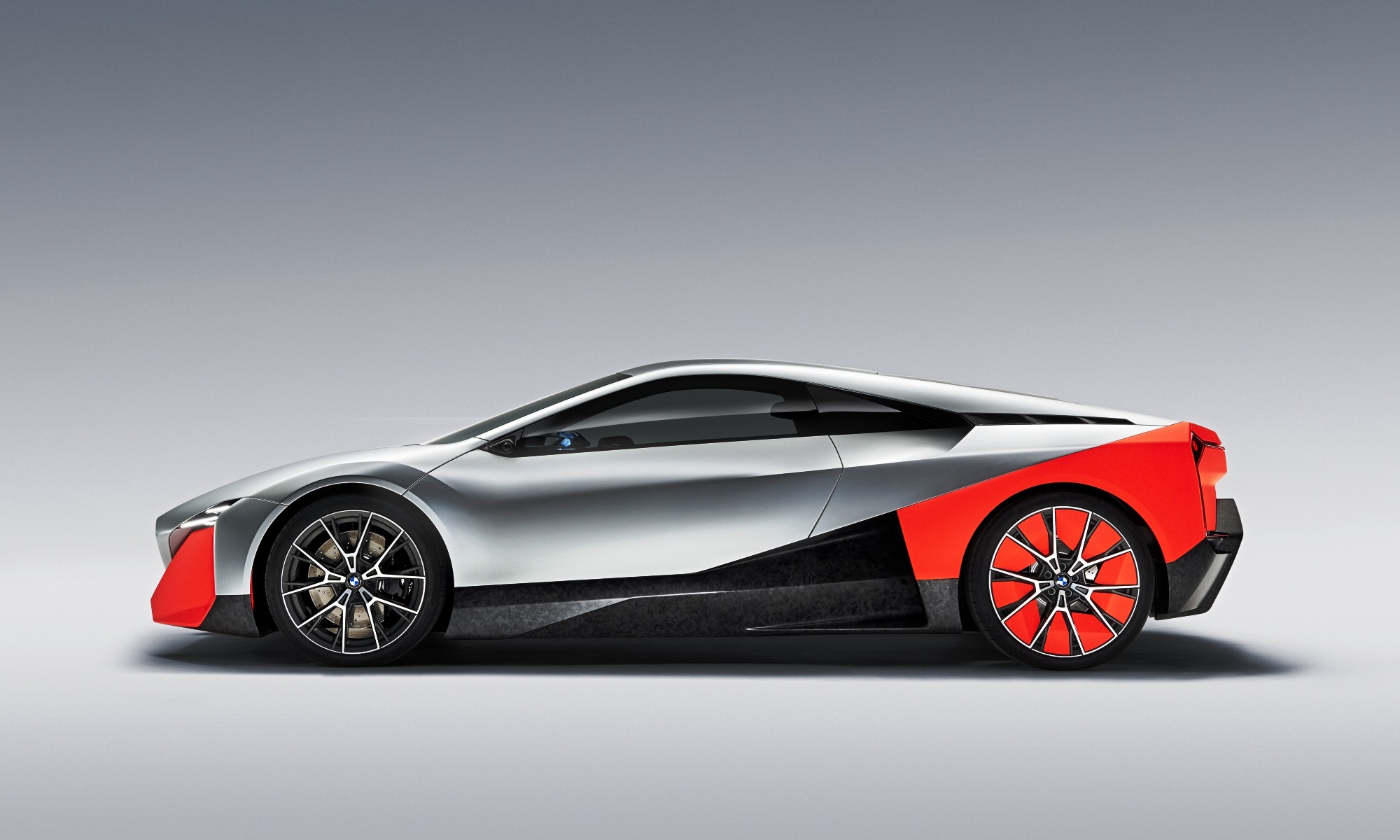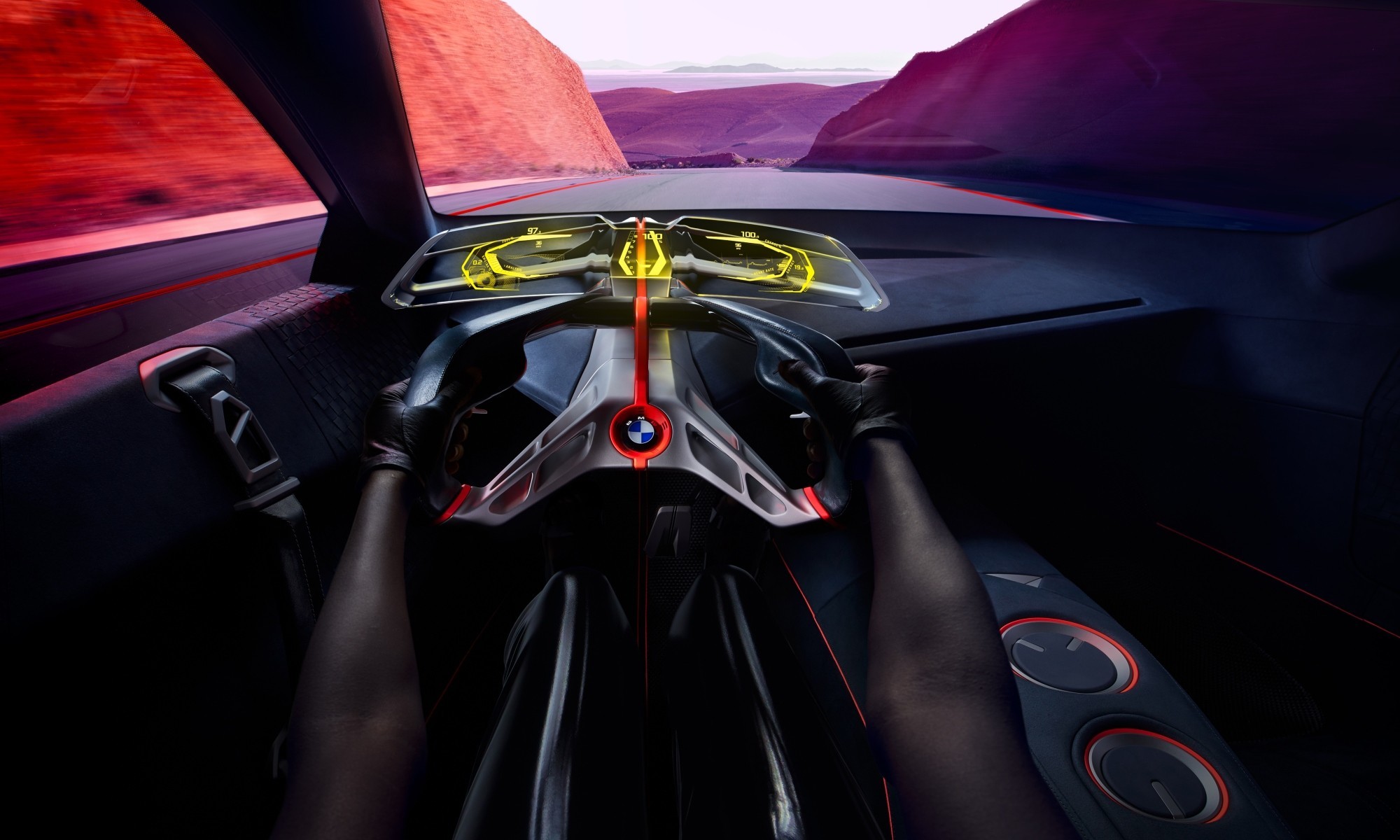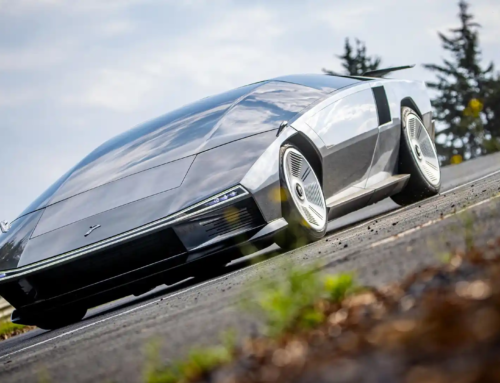At the BMW Next technology showcase taking place in Munich today, the Bavarian company debuted the BMW Vision M Next concept car. This model highlights what the future of its high-performance M brand might look like.
Click here to read up on the BMW M8.
Looking back and forward
The distinctive model looks back into the company’s past by using a retro colour scheme, such as that seen on the 1970s 2002 Turbo. The silhouette is reminiscent of the more recent BMW i8, with a low-slung, wedge-like profile and up-swinging doors (check out the BMW i8 Roadster Safety Car here). A pair of BMW roundels on the rear end, with a two-dimensional twist, and a louvred rear window reference the legendary BMW M1.
Modern touches include the extensive use of carbon-fibre in its construction. Parts of it, such as the front splitter are made from recycled carbon-fibre. Laser-wire technology has been employed for the futuristic-looking head- and taillamps.
Electrified performance
Key to the M brand’s future is electrification. BMW Vision M Next uses PHEV drive. This means it has an electric motor driving both the front and rear axles enabling pure-electric rear-wheel drive and pure-electric all-wheel drive. On electric power alone the vehicle can travel up to 100 km.
There is also a powerful four-cylinder turbopetrol engine that can send power directly to the rear wheels. Maximum combined output of 441 kW provides 0 to 100 km/h acceleration in three seconds and a top speed of 300 km/h. BOOST+ mode provides extra power at the touch of a button. The car alerts the driver to the ideal moment for BOOST+.
Inside
BMW’s interior designers have created a cabin that tries to merge the driver and car into one. The integrated seat shells feature memory-shape foam that provides excellent comfort and optimum support.
The BOOST Pod instrument cluster is a new type of interface between driver and vehicle. All controls and information are combined on three visual tiers directly ahead of the driver. The first plane is formed by the steering wheel featuring two small displays. The second is a curved glass display that stretches around the steering wheel. And an augmented reality Head-Up Display in the windscreen constitutes the third.
Interestingly, the information displayed adapts to the car’s speed. The higher the speed, the more focused the information and the more it moves into the driver’s direct field of view.







![Ferrari Amalfi Introduced as Roma’s Replacement [w/video]](https://doubleapex.co.za/wp-content/uploads/2025/07/Ferrari-Amalfi-500x383.webp)
![Koenigsegg Sadair’s Spear is a Limited-Edition Track Weapon [w/video]](https://doubleapex.co.za/wp-content/uploads/2025/07/Koenigsegg-Sadairs-Spear-rear-500x383.webp)


Leave A Comment